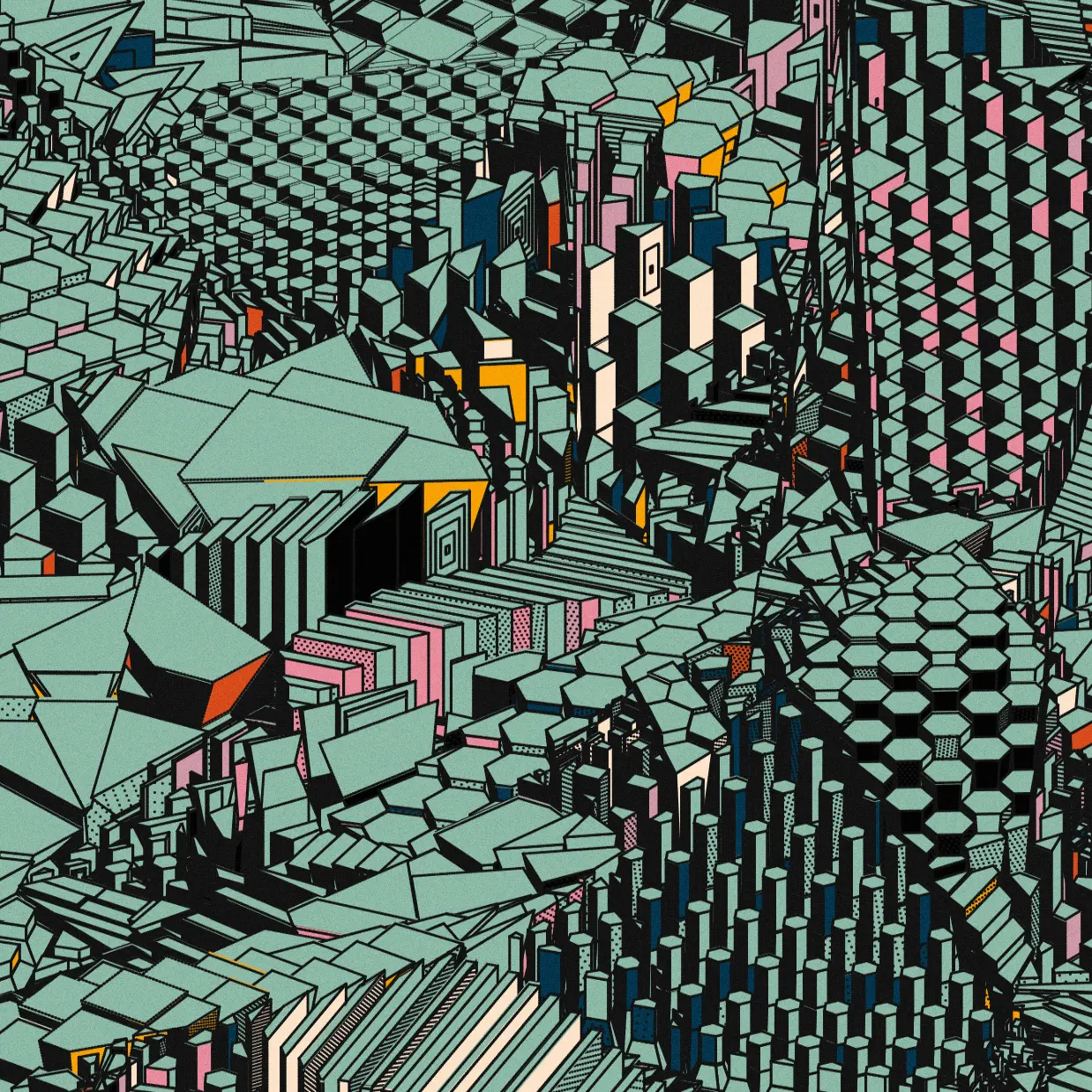Blockchain technology is one of the most exciting and innovative trends in the tech industry. It is a distributed, encrypted database model that has the potential to solve many problems around online trust and security. It is best known for powering cryptocurrencies such as Bitcoin and Ethereum. However, it also has many other applications in various sectors such as art, finance, healthcare, and the environment.
In this article, we will explore some of the ways blockchain technology is transforming these sectors and creating new opportunities and challenges for individuals, businesses, and society. We will also look at some of the latest developments and news in the blockchain field and what they mean for the future.

What is Blockchain Technology and How Does It Work?
Blockchain technology is a system of storing and transferring data. It uses cryptography to link back to each other and contain transactional data. Each piece of data is called a block. Meanwhile, each block contains a timestamp, a cryptographic hash of the previous block, and the transaction data. The blocks are arranged in a linear sequence called a chain, hence the name blockchain.
Blockchain technology is designed to be secure, transparent, and decentralized. Secure means that the data is encrypted and can only be modified by authorized parties. Transparent means that the data is visible and verifiable by anyone who has access to the blockchain network. Decentralized means that the data is stored and updated by multiple nodes or computers across the network, rather than by a single authority or intermediary.
One of the main advantages of blockchain technology is that it eliminates the need for trust between parties who want to exchange data or value. For example, if Alice wants to send money to Bob using a traditional system, she would need to rely on a third party such as a bank or a payment service provider to process and verify the transaction. This would incur fees, delays, and risks of fraud or error.
However, if Alice and Bob use a blockchain system, they can directly send money to each other without involving any intermediaries. The transaction would be recorded on the blockchain ledger. Then, it would be validated by other nodes on the network using a consensus mechanism. This would ensure that the transaction is accurate, authentic, and irreversible.
How Blockchain Technology Is Revolutionizing Art: The Rise of NFTs and Digital Creativity
One of the most popular and controversial applications of blockchain technology in recent years is the creation and sale of digital art using non-fungible tokens (NFTs). NFTs are unique digital assets that can be verified and traded on a blockchain. Unlike fungible tokens such as cryptocurrencies, which are interchangeable and have equal value, NFTs are one-of-a-kind and have varying values depending on their rarity, quality, and demand.
NFTs have been used to represent various forms of digital art such as images, videos, music, games, memes, tweets, and more. Some examples of famous NFTs are:
- The first tweet was by Twitter founder Jack Dorsey, which was sold for $2.9 million in March 2021.
- The digital collage “Everydays: The First 5000 Days” by artist Beeple, was sold for $69 million in March 2021.
- The animated GIF “Nyan Cat” by creator Chris Torres, was sold for $590,000 in February 2021.
NFTs have been praised for empowering digital artists to monetize their work and gain recognition in the global art market. They have also been criticized for being overhyped, wasteful of energy, and prone to plagiarism and fraud.
How Blockchain Technology Is Revolutionizing Finance: The Future of Cryptocurrencies, Payments, and Banking
Blockchain technology is perhaps most widely known for its role in enabling cryptocurrencies such as Bitcoin and Ethereum. Cryptocurrencies are digital currencies that use cryptography to secure their transactions and control their creation. They operate on decentralized networks that are governed by rules encoded in software rather than by central authorities.
Cryptocurrencies have been used for various purposes such as:
- A store of value that can hedge against inflation or currency devaluation.
- A medium of exchange that can facilitate cross-border payments or remittances.
- A unit of account that can measure the value of goods or services.
- A source of investment that can generate returns or losses depending on market fluctuations.
Cryptocurrencies have been praised for their innovation, efficiency, and inclusivity. They have also been criticized for their volatility, complexity, and illegality.
Besides cryptocurrencies, blockchain technology has also been used to create other financial solutions such as:
- Stablecoins are cryptocurrencies pegged to a stable asset such as a fiat currency or a commodity to reduce volatility and increase liquidity.
- Central bank digital currencies (CBDCs) are digital versions of national currencies that are issued and regulated by central banks to enhance monetary policy and financial inclusion.
- Decentralized finance (DeFi) is a movement that aims to create open, transparent, and permissionless financial services such as lending, borrowing, trading, and insurance using blockchain-based protocols and applications.
How Blockchain Technology Is Revolutionizing Healthcare: The Role of Blockchain in Vaccine Distribution, Medical Records, and Research
Blockchain technology has also been applied to the healthcare sector, where it can potentially improve the quality, efficiency, and security of healthcare services and outcomes. Some of the ways blockchain technology can benefit healthcare are:
- Vaccine distribution: Blockchain technology can help with the complex and challenging task of delivering Covid-19 vaccines to billions of people around the world. It can provide a secure and transparent way to track the movement, storage, and administration of vaccines, as well as verify the identity and health status of recipients.
IBM has partnered with several organizations to develop a blockchain-based platform called Digital Health Pass, which can enable individuals to share their vaccination records or test results with verifiers such as airlines or employers.
- Medical records: Blockchain technology can help with the management and sharing of medical records among patients, providers, and insurers. It can ensure that the records are accurate, up-to-date, and accessible by authorized parties. It can also protect the privacy and confidentiality of the records by encrypting them and giving patients control over who can access them.
Medicalchain has developed a blockchain-based platform that allows patients to store their health records securely and grant access to doctors or researchers.
- Research: Blockchain technology can help with the conduct and dissemination of medical research. It can facilitate the collection and analysis of data from various sources such as clinical trials, electronic health records, or wearable devices. It can also enhance the integrity and reproducibility of research by creating immutable records of the research process and results.
For example, Bloqcube has developed a blockchain-based platform that streamlines clinical trials by automating data capture, verification, and reporting.
How Blockchain Technology Is Revolutionizing the Environment: The Challenges and Solutions for Greening Blockchain
Blockchain technology is not without its environmental impact. Blockchains can potentially use a lot of energy and create high levels of carbon emissions. This is especially true for blockchains that rely on proof-of-work (PoW) algorithms to generate consensus among nodes on the network. PoW algorithms require nodes to compete in solving complex mathematical problems in order to validate transactions and create new blocks. This process consumes a lot of computing power and electricity.
According to some estimates, Bitcoin alone consumes more electricity than in some countries such as Argentina or Norway. The carbon footprint of Bitcoin is comparable to that of New Zealand or Chile.
Therefore, there is a growing interest in finding ways to make blockchain more environmentally friendly. Some of the possible solutions are:
- Switching to alternative consensus mechanisms such as proof-of-stake (PoS) or proof-of-authority (PoA) that do not require intensive computation or energy consumption.
- Investing in renewable energy sources such as solar or wind power to supply electricity for blockchain operations.
- Implementing carbon offsetting schemes such as planting trees or supporting green projects to compensate for the emissions generated by blockchain activities.
Parting shot
Blockchain technology is a powerful tool that can revolutionize various sectors and domains by providing secure, transparent, and decentralized solutions for data storage and transfer. It can also create new opportunities and challenges for individuals, businesses, and society.
However, blockchain technology is not a panacea or a magic bullet. It also comes with its own limitations, risks, and trade-offs. Furthermore, it requires technical expertise, regulatory compliance, user adoption, and social acceptance. It also poses ethical, legal, and environmental dilemmas that need to be addressed.
Therefore, it is important to understand the basics of blockchain technology, its pros and cons, its current and future applications, and its implications for various stakeholders. It is also important to stay updated on the latest developments and news in the blockchain field and what they mean for the future.
We hope you enjoyed this article and learned something new about blockchain technology. Thank you for reading.
Personal Note From MEXC Team
Check out our MEXC trading page and find out what we have to offer! There are also a ton of interesting articles to get you up to speed with the crypto world. Lastly, join our MEXC Creators project and share your opinion about everything crypto! Happy trading! Learn about interoperability now!
Join MEXC and Start Trading Today!



